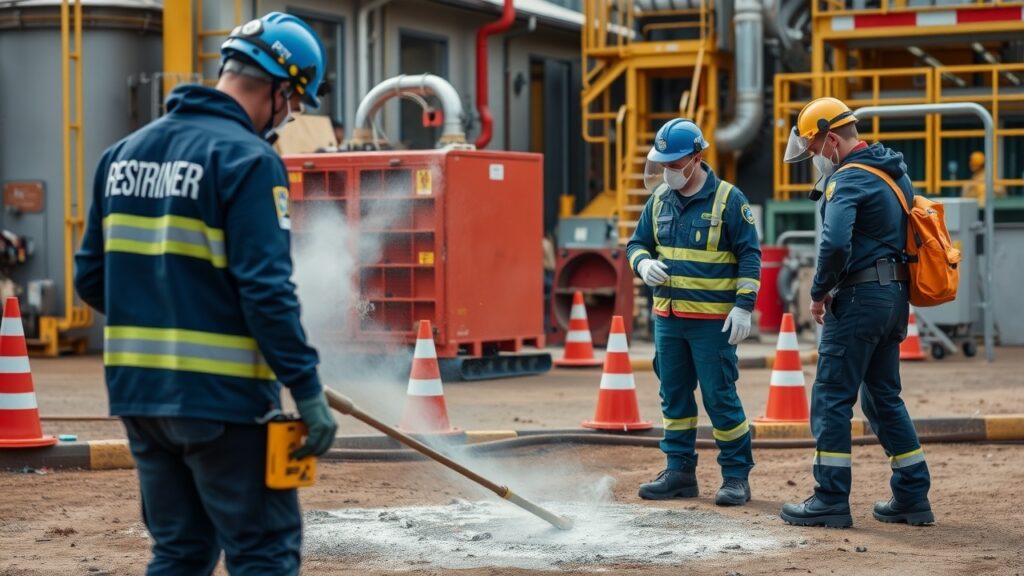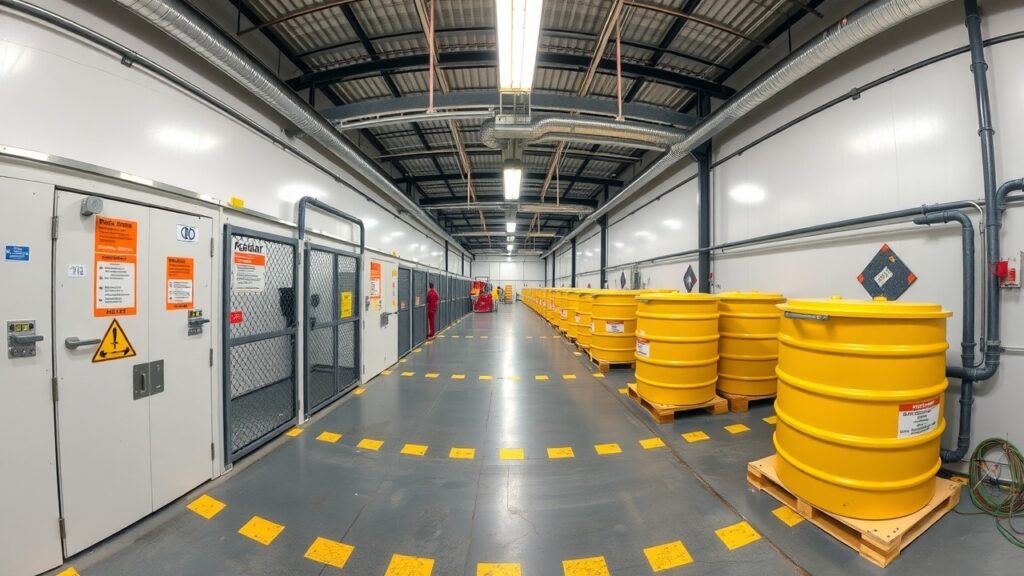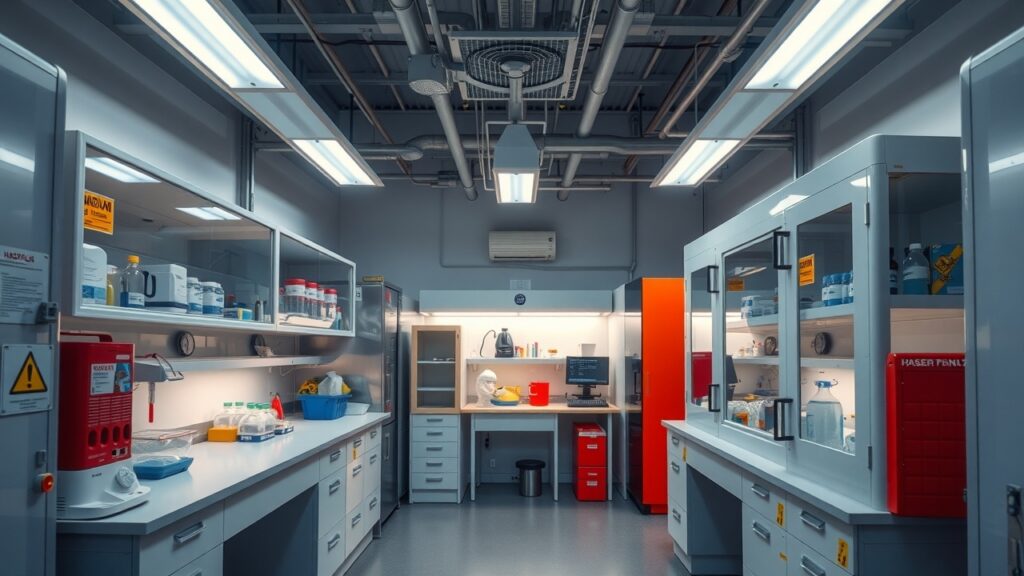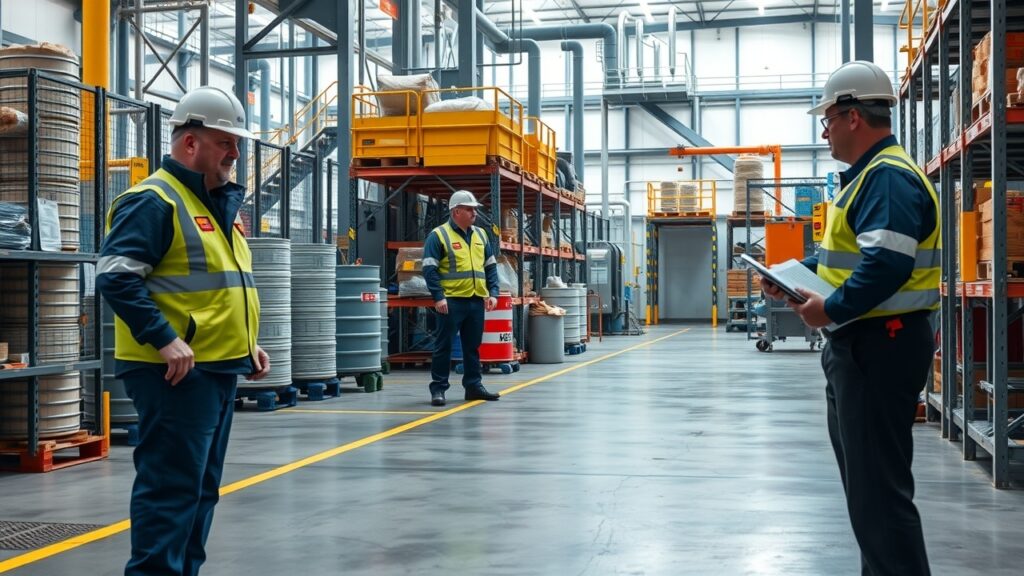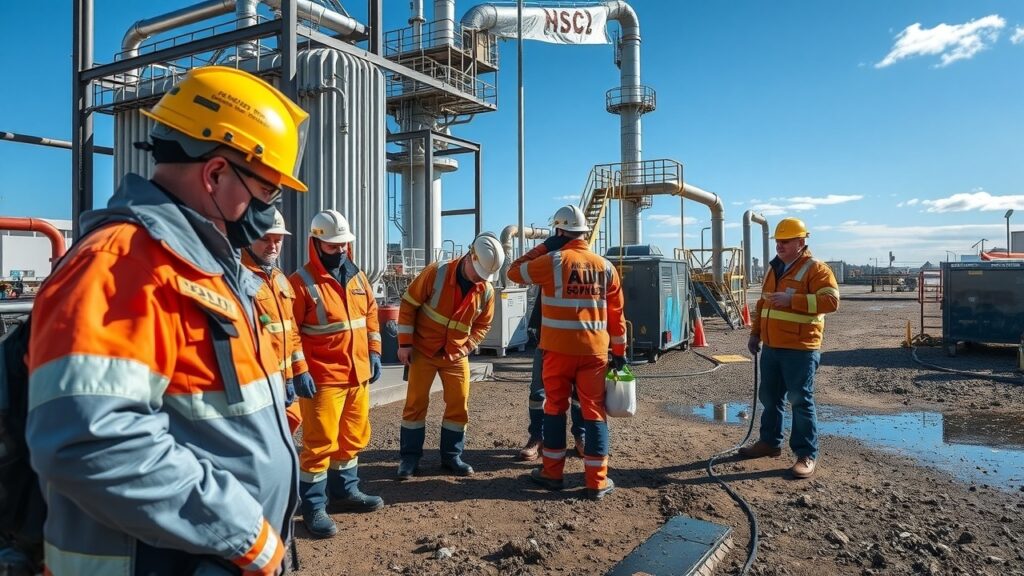Facility and Hazardous Materials Management – Sustainable Practices for Compliance and Safety
Capstone Civil Group offers effective facility and hazardous materials management solutions that prioritize safety and compliance. Our sustainable practices ensure your facility operations align with environmental health standards.
Comprehensive Hazardous Materials Management Plan
Key Elements of a Hazardous Materials Management Plan
A good hazardous materials management plan is super important for safety and following the rules at your workplace. Here are the main parts to think about:
- Risk Assessment and Hazard Identification: You need to spot and check out the types of dangerous substances in your facility. This helps you figure out what risks you might face.
- Inventory Management and Tracking Systems: Keeping an accurate list of all hazardous materials is a must. A proper tracking system helps you manage these materials safely.
- Storage and Handling Procedures: Make sure that storage follows guidelines, especially for incompatible materials. It’s essential to create safe ways to handle these substances.
- Emergency Response Protocols: You should have clear steps ready in case of accidents involving hazardous materials, like spills or evacuations.
Developing a Comprehensive Hazardous Materials Management Plan involves creating a structured approach to safely handle, store, and dispose of hazardous materials. The plan includes identifying all hazardous substances, assessing risks, and implementing safety procedures to prevent accidents.
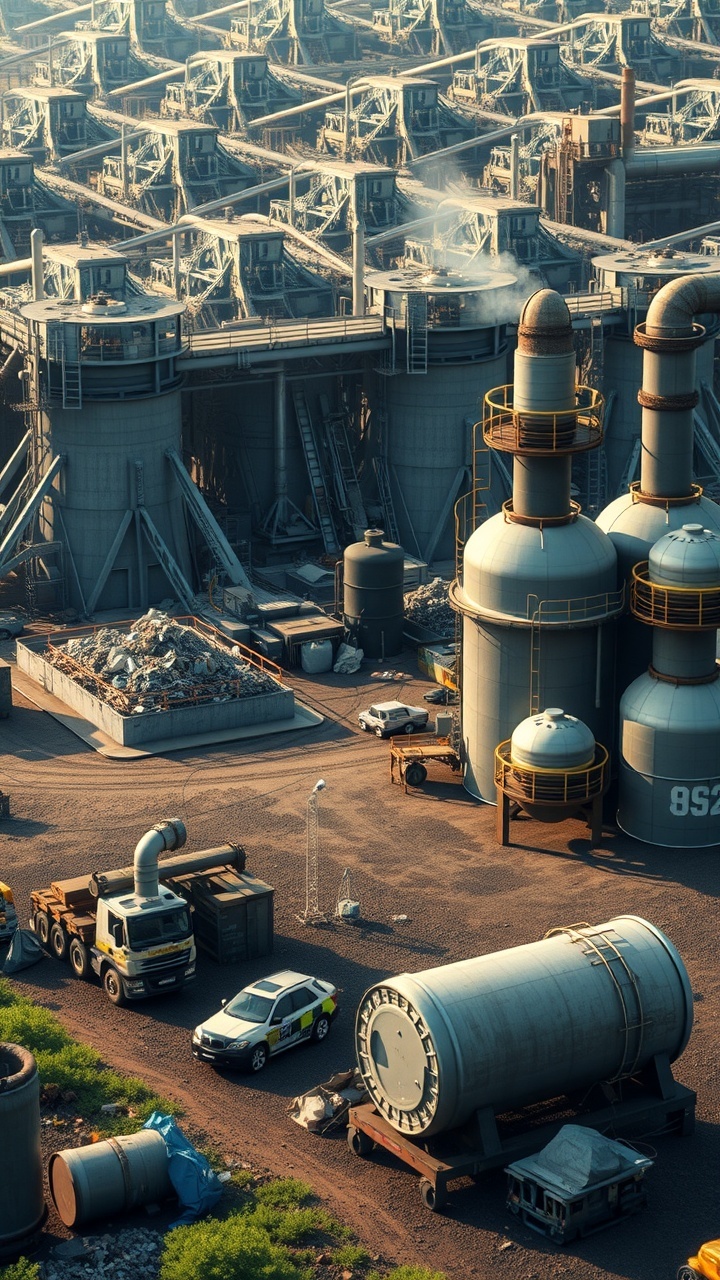
Conducting a Facility-Wide Risk Assessment
Doing a thorough risk assessment is key for spotting hazards that could harm workers or the environment. Here’s how to do it:
- Site Assessment: Start by looking at current conditions regarding chemical exposure and any physical dangers in your work area.
- Incident Reporting Systems: Keep records of past incidents; this can help you find areas that need fixing.
- Prioritizing Risks: Decide which risks are more serious so you can put your resources where they matter most.
Implementing an Effective Inventory Management System
A solid inventory management system is vital for keeping track of hazardous materials from start to finish. Here’s what you should focus on:
- Choosing the Right Software: Pick software designed for chemical inventory to make tracking easier while staying compliant with regulations.
- Utilizing Barcode or RFID Technologies: These tools help you keep real-time tabs on your inventory, making it easier during audits.
- Real-Time Monitoring and Reporting: Ongoing monitoring helps ensure safety and compliance across your facility.
Proper Storage and Handling of Hazardous Materials
Storing hazardous materials properly can cut down risks significantly. Here are some things to consider:
- Designing Safe Storage Areas: Set up special areas for each type of material based on their needs, like temperature controls and compatibility with other chemicals.
- Segregation Principles: Make sure different types of dangerous materials are kept apart to prevent accidents, which keeps everyone safe.
- Personal Protective Equipment (PPE): Teach employees how important it is to use PPE during handling so they stay safe from exposure.
Environmental Compliance and Sustainable Practices
Before starting new projects or making changes to facilities that deal with hazardous materials, it’s key to conduct an Environmental Impact Assessment (EIA). This helps spot potential negative effects on the environment before any work begins.
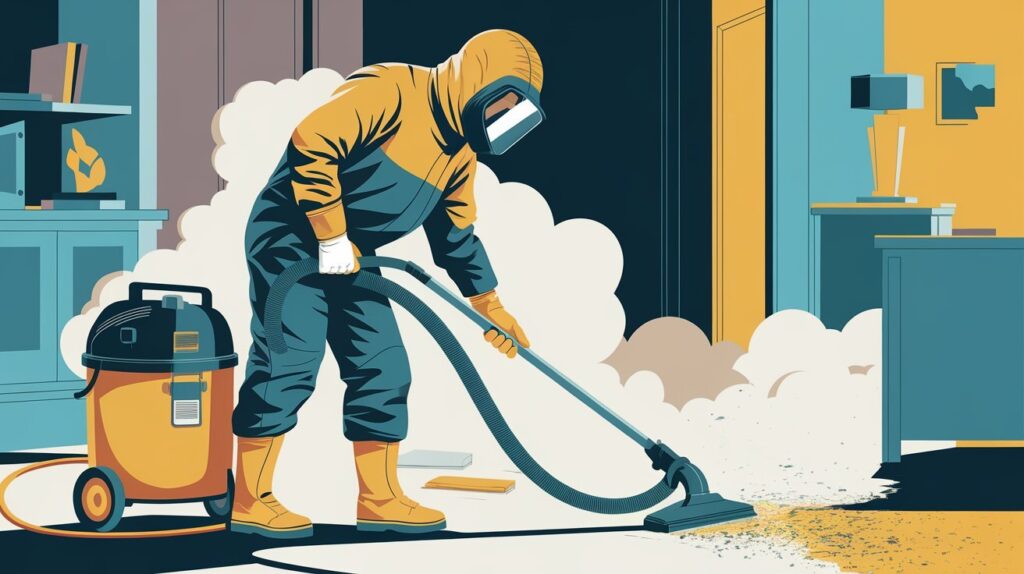
Identifying Project Scope
Define what the project aims to achieve.
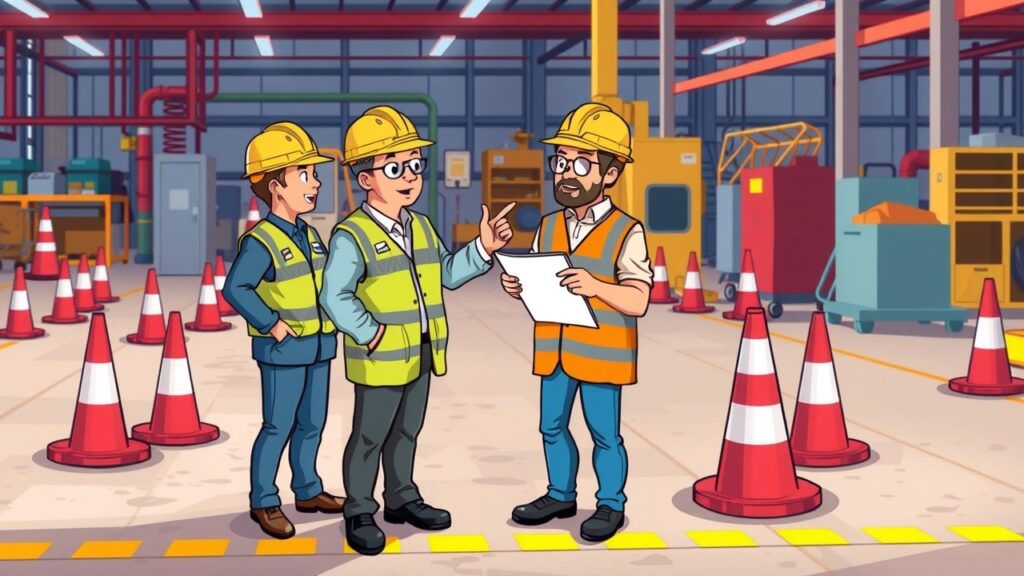
Evaluating Existing Conditions
Assess the current site situation.
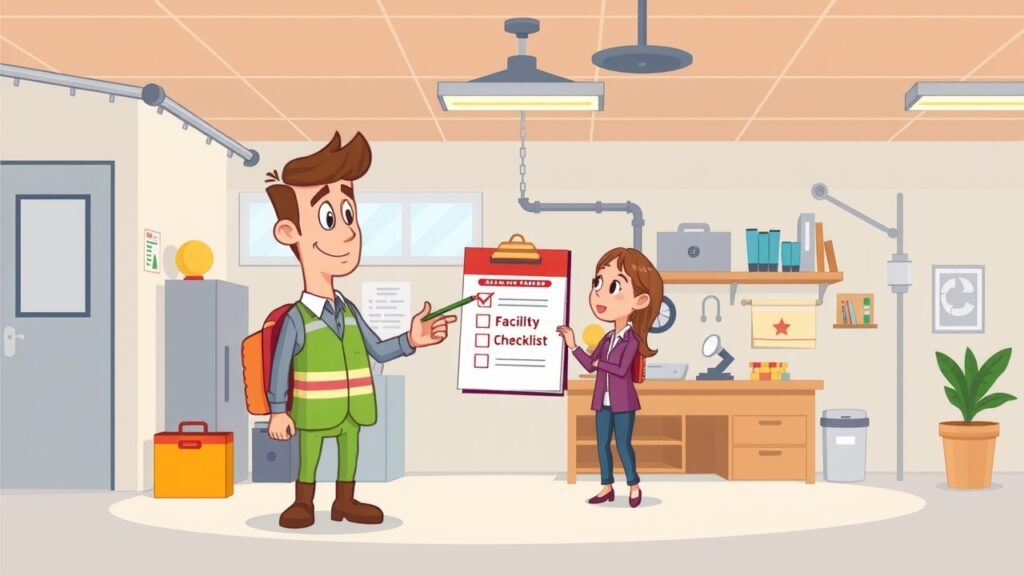
Predicting Potential Impacts
Forecast what could go wrong using different scenarios.
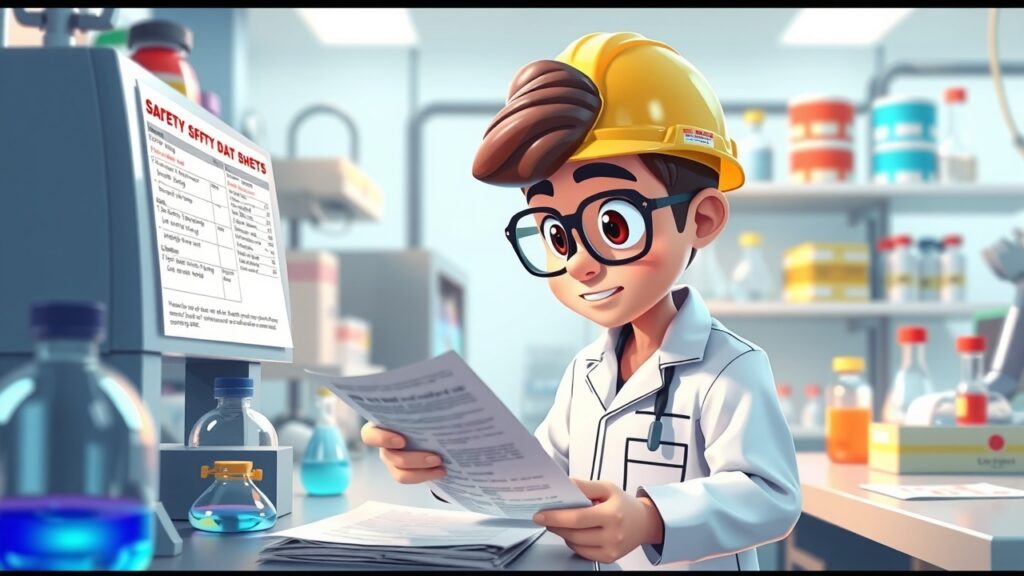
Developing Mitigation Strategies
If risks pop up, plan how to reduce them.

Collaborating with Environmental Consultants
Work with experts to interpret results and implement effective mitigation plans.
Training and Safety Protocols for Hazardous Materials Handling
Comprehensive Employee Training Programs
It’s super important to have good training for workers who deal with hazardous materials. These training programs need to meet OSHA standards and fit your facility’s needs. Staff should learn about risk assessment, incident management, and how to use personal protective equipment (PPE).
You should decide how often to train based on rules and the complexity of tasks. Keep clear records of every training session for audits and reviews. Hands-on workshops can really help employees feel more prepared for real-life situations.
Personal Protective Equipment (PPE) for Hazardous Materials
Choosing the right personal protective equipment (PPE) is key to keeping workers safe from hazardous materials. The PPE needed varies depending on what kind of hazards are around, like chemicals or biological agents.
Employees must learn how to wear and take care of their PPE properly. Regular fit tests help ensure that the gear works as it should. It’s also important that your facility has a steady supply of PPE so everyone can get what they need quickly.
Safe Handling Procedures for Different Hazardous Materials
Having safe handling procedures is really crucial when working with hazardous materials. Staff should get specific training for each type, whether it’s chemical, biological, or something else. This includes knowing how to store materials safely based on their compatibility, which helps with environmental compliance.
Doing regular audits can show you where you can improve handling practices or inventory systems. Addressing these areas ahead of time can help reduce risks from spills or other accidents.
Spill Response and Containment Techniques
You need effective spill response plans that consider potential hazards in your facility. Quick actions must focus on using the right containment methods for the different materials you handle, whether they’re liquids or solids.
Training staff on these procedures means they can act fast during emergencies. Keeping accurate records of incidents lets organisations learn from past events and improves future responses.
Incident Reporting and Investigation
A strong incident reporting system is essential for workplace safety with hazardous materials. Every incident, even near misses, needs to be documented carefully. This information is super useful during investigations that aim to stop similar issues from happening again by figuring out the root causes.
Make sure there are clear lines of communication so everyone knows who reports what information. This way, there won’t be any misunderstandings about responsibilities among team members involved in managing hazards.
Creating a Culture of Safety in Hazardous Materials Management
Building a culture that values safety involves leaders engaging all employees about their roles in health and safety regulations. Regular meetings dedicated to discussing safety initiatives encourage participation and shared responsibility.
When you recognize individuals who follow safety practices well, it emphasizes how important following established protocols is. Feedback loops can make employees feel more invested in their workspaces, helping create a safer environment for everyone involved with hazardous materials.
Developing Emergency Response Procedures
Having solid emergency response plans makes it easier to handle incidents if they arise. Here’s what you can do:
- Creating an Emergency Response Plan: Your plan should be specific to the types of hazards in your facility.
- Training Staff Regularly: Hold training sessions so everyone knows their role in case something goes wrong.
- Conducting Drills and Simulations: Regular practice helps ensure that staff know what to do when there’s an emergency.
Integrating Sustainability into Hazardous Materials Management
Bringing sustainability into how you manage hazardous materials can help both operations and the environment. Some strategies include:
- Waste Minimisation Strategies: Try reducing waste by recycling or reusing it wherever possible.
- Eco-Friendly Alternatives: Look for safer substitutes for traditional hazardous materials to cut environmental risks.
- Circular Economy Principles: Focus on reducing waste by promoting recovery and reuse in your material management practices.
By following these steps, workplaces can make their hazardous materials management plans better while helping protect both people and the planet.
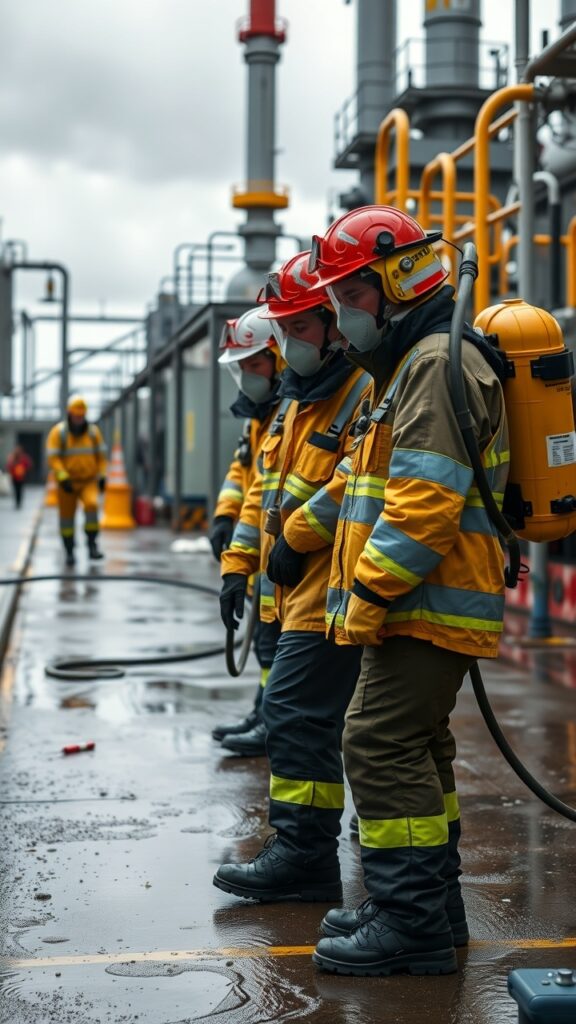
Advanced Technologies in Hazardous Materials Management
Real-time Monitoring and Compliance: IoT sensors are crucial for tracking hazardous materials in real-time, ensuring accurate chemical inventory management and regulatory compliance.
Blockchain and AI for Risk Reduction: Blockchain enhances security and transparency in hazardous materials tracking, while AI systems predict equipment failures, making risk assessment more efficient.
Robotics and Drones for Safety: Robots handle dangerous materials, reducing human exposure, and drones assist in inspections, improving safety and emergency response.
Nanotechnology and Sustainability: Nanotechnology improves containment of hazardous materials, while future trends focus on sustainable practices and circular economy principles in facility management.
Implementing Pollution Prevention Strategies
The goal of pollution prevention strategies is simple: reduce waste right from the start instead of dealing with it after it’s created. Some effective methods include starting recycling programs for hazardous materials and using better technology to manage emissions.
It’s a good idea for organisations to regularly check how they can improve their pollution prevention efforts. This not only keeps them compliant but also builds a more sustainable culture in the workplace.
Waste Minimisation and Management
Properly managing hazardous waste starts with classifying and separating it correctly. Facilities need clear protocols that explain how different types of waste will be handled, covering everything from storage to disposal.
These procedures ensure safety while sticking to laws about chemical management. Also, having a system for reporting incidents can help address problems quickly if something goes wrong, keeping safety in check.
Air Quality Management in Facilities
Keeping air quality high is vital for protecting employee health in facilities that handle hazardous materials. Regular monitoring using sensors can pick up airborne pollutants from various chemicals used on-site.
Investing in emission control technologies is necessary not just for compliance but also for reducing risks from harmful pollutants. Such actions not only boost workplace safety but also help meet air quality standards set by authorities across Australia.
Water Conservation and Wastewater Management
Water conservation is crucial in sustainable practices for organisations that manage hazardous materials. It’s important to adopt effective wastewater treatment technologies that help lessen water usage while treating wastewater properly.
Setting up clear management plans for stormwater runoff is also key to preventing contamination problems and encouraging responsible water use across all departments. Such initiatives show commitment to corporate responsibility and build trust within the community over time
Ensure Safety & Compliance with Expert Facility and Hazardous Materials Management
Our expert team provides tailored solutions to efficiently handle and manage hazardous materials, ensuring a safe and compliant work environment.
FAQs on Facility and Hazardous Materials Management
When it comes to facility and hazardous materials management, many questions come up. Here are some frequently asked questions to help clarify common concerns.
Our Approach to Facility and Hazardous Materials Management
Our Comprehensive Management Solutions
Capstone Civil Group offers a wide range of management solutions for facility and hazardous materials management. We help you from the start with site assessments and keep things running smoothly with compliance audits. Our goal is to follow local regulations in Western Australia and New South Wales while keeping your operations efficient and environmentally friendly.
Our team performs safety audits that look closely at potential risks tied to hazardous materials. We also use effective waste disposal methods, which help facilities meet safety and environmental standards.
Risk Assessment and Mitigation Strategies
We use special methods to assess risks in your facility. This helps us find any weaknesses that could lead to problems, especially regarding hazardous materials.
We set up systems for early incident reporting, making it easy for staff to spot potential hazards. Plus, we focus on chemical management so that safe handling practices are standard across your operations, which helps protect everyone’s health.
Customised Training and Certification Programs
Training is super important for workplace safety when dealing with hazardous materials. That’s why we provide programs designed to meet specific industry needs, including OSHA certification.
Our workshops let employees practice emergency response skills in real-life scenarios before they face actual emergencies. This hands-on approach builds confidence and readiness.
Emergency Response Planning and Support
Capstone Civil Group is skilled at creating emergency response plans tailored to each facility’s challenges with hazardous materials. Our emergency response teams are available 24/7, ready to act quickly during spills or leaks.
With quick action protocols in place, we ensure timely responses. After any incident, we analyze what happened to improve future plans based on lessons learned.
Sustainable Practices and Environmental Stewardship
We’re committed to sustainability in all our facility management practices. We encourage eco-friendly options whenever possible and work pollution prevention strategies into everyday routines.
By focusing on reducing waste and promoting recycling, we not only meet regulatory requirements but also support long-term stewardship of natural resources.
Compliance Assurance and Regulatory Support
Keeping up with changing regulations is essential for managing hazardous materials safely. At Capstone Civil Group, we offer dedicated support through audit preparations and thorough documentation processes to ensure compliance at all levels.
Our expertise goes beyond just meeting federal regulations; we work towards fostering a culture where waste minimisation becomes part of your organization’s everyday strategy.
Key Elements in Hazardous Materials Management
- Chemical Safety: Implement guidelines for safe use of chemicals.
- Emergency Response Planning: Develop tailored plans for potential incidents.
- Safety Audits: Conduct regular checks to identify risks.
- Hazardous Waste Treatment: Properly handle waste to reduce environmental impact.
- Incident Management: Establish procedures for reporting and responding to incidents.
- Chemical Inventory: Maintain accurate records of hazardous substances.
- Workplace Safety: Foster a culture prioritizing employee well-being.
- Hazardous Waste Disposal: Follow regulations for safe waste disposal.
- OSHA Standards: Comply with workplace safety regulations.
- Environmental Impact Assessment: Evaluate potential environmental effects before projects commence.
- Sustainability Practices: Incorporate eco-friendly methods into operations.

